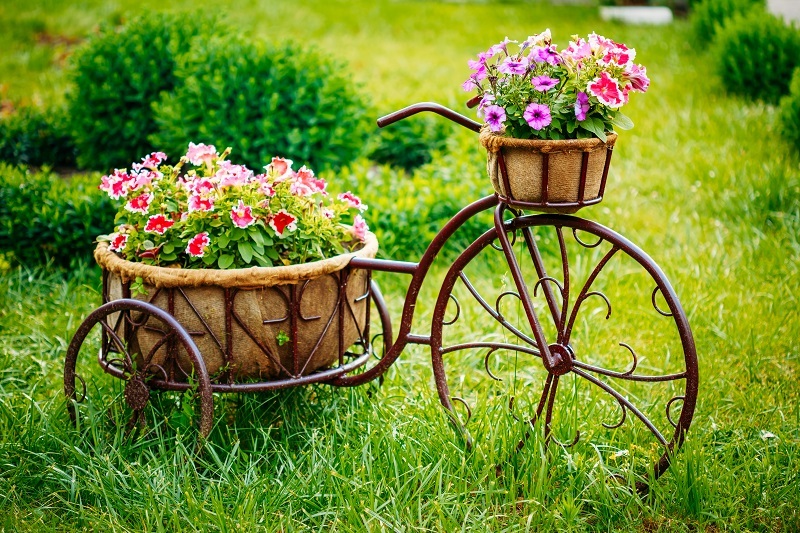A Comprehensive Guide to Growing Beautiful Orchids
Posted on 31/08/2025
A Comprehensive Guide to Growing Beautiful Orchids
Welcome to your ultimate guide on cultivating stunning, healthy orchids! Orchids are renowned for their enchanting blooms, exotic allure, and elegant shapes. However, many gardening enthusiasts find them intimidating to grow. This comprehensive resource will demystify the process and provide actionable tips to ensure your orchids thrive--whether you're a beginner or a seasoned orchid caretaker.
Understanding Orchids: What Makes Them Unique?
Orchids are a diverse family of plants, with over 25,000 naturally occurring species and more than 100,000 hybrids. These botanical wonders can be found growing on every continent except Antarctica. They are prized for their vibrant flowers, which exhibit a remarkable variety of colors and forms.
Key Characteristics of Orchids
- Epiphytic Nature: Most popular orchids grow on trees, absorbing moisture and nutrients from the air and rain.
- Unusual Root Structure: Orchid roots are typically thick and covered with velamen--a spongy tissue that helps absorb water quickly.
- Long-Lasting Blooms: With proper care, orchid flowers can last for several weeks or even months.
- Fascinating Variability: Orchids come in all shapes, sizes, and colors; there's an orchid for every decor and style.

Choosing the Right Orchid Variety
When starting your journey into orchid cultivation, it's important to select varieties that suit your growing environment. Here are some of the most popular and beginner-friendly options:
- Phalaenopsis (Moth Orchids): Known for their generous, striking blooms and remarkable resilience. Ideal for newbies.
- Cattleya: Admired for fragrant, large flowers. They thrive in bright, indirect sunlight.
- Dendrobium: Offering a delicate display, these orchids adapt well to household conditions.
- Oncidium: With their slender, dancing blooms, Oncidium orchids meaningfully brighten any indoor garden.
- Vanda: Enthusiasts love them for intense colors and exotic, dramatic appearances.
Setting Up the Perfect Environment for Orchid Growth
Finding the Best Location
One essential step in growing beautiful orchids is selecting the right spot in your home. Orchids crave specific conditions. Here's how to create the ideal environment:
- Light: Most orchids require bright, indirect light. An east-facing window is often perfect. Too much sun can scorch leaves, while too little can inhibit flowering.
- Humidity: Strive for humidity levels between 40-70%. Use a humidifier or a water tray to maintain proper moisture in the air.
- Temperature: Orchids generally thrive in daytime temperatures of 65-80?F and nighttime temperatures of 55-65?F. Watch out for ozone or radiator heat, as extremes can stress the plant.
- Air Circulation: Gentle airflow prevents fungal diseases--small fans on low speed can help.
Orchid Growing Medium: More Than Just Soil
Traditional soil doesn't suit orchids. Instead, use specialty mixes designed for these epiphytes:
- Pine bark chips
- Sphagnum moss
- Coconut husk
- Charcoal
- Perlite
Each type offers different drainage and moisture-retaining properties. For Phalaenopsis, a bark-based mix typically works best, while Dendrobium may prefer a chunky combination.
Watering and Fertilizing Orchids
How to Water Orchids Effectively
Many enthusiasts overwater their orchids, which can cause root rot. Here's how to water orchids the right way:
- *Check the Potting Mix*: The media should dry out slightly between waterings. Insert your finger an inch deep--if it feels dry, it's time to water.
- *Water in the Morning*: Early watering reduces the chance of fungal infections.
- *Avoid Standing Water*: Ensure good drainage. Never let roots sit in water.
- *Humidity Trays*: Place pebbles and shallow water underneath pots, ensuring roots don't touch the water.
Pro Tip: Most orchids do better with less water than with too much. If in doubt, wait a day before watering.
Feeding Your Orchids
To encourage blooming and strong growth, fertilize your orchids regularly:
- Balanced Fertilizer: Use a 20-20-20 orchid fertilizer diluted to half or quarter strength every two weeks in spring and summer.
- Flush the Potting Medium: Once per month, flush pots with plain water to prevent salt build-up.
- Reduce Feeding in Winter: While orchids are dormant, scale back fertilization to once per month.
Potting and Repotting Orchids
When To Repot Your Orchid
Growing thriving orchids involves repotting every 1-2 years, typically after blooming. Signs your orchid needs repotting include:
- Crowded roots spilling over the pot
- Potting material breaks down or smells sour
- Water runs through the potting mix quickly without being absorbed
How to Repot an Orchid
Repotting doesn't need to be daunting. Here's a straightforward process:
- Gently remove the orchid from its pot and shake off the old medium.
- Trim away any dead or mushy roots using sterilized scissors.
- Position the plant in a clean pot, spreading roots evenly.
- Add fresh orchid mix, ensuring the base is just covered but not buried too deeply.
- Water lightly and keep in indirect light for a few weeks as the plant acclimates.
Encouraging Blooms: How to Get Orchids to Flower Again
Understanding Orchid Bloom Cycles
Getting orchids to rebloom is a milestone for every grower. Most orchids bloom once per year, though some, like Phalaenopsis, may produce flowers biannually with the right care.
Tips to Encourage Reblooming
- Sufficient Light: Insufficient light is the most common cause of non-blooming orchids. Leaves should be light green, not deep green, for maximum blooming potential.
- Temperature Fluctuations: A brief exposure to night temperatures 10?F lower than daytime for a few weeks in autumn can trigger flower spikes.
- Balanced Nutrition: Use a bloom-boosting fertilizer high in phosphorus as buds start to form.
- Proper Rest Periods: Some species, such as Cattleya or Dendrobium, need a dry rest after flowering before setting new buds.
Dealing With Orchid Pests and Diseases
Common Problems and Solutions
While cultivating beautiful orchids, you may encounter the following issues:
- Pests: Mealybugs, spider mites, and scale insects often invade indoor orchids. Wipe leaves with soapy water or a neem oil solution to deter pests.
- Root Rot: Common in overwatered plants. Remove damaged roots, use fresh media, and allow the orchid to recover in dry conditions.
- Fungal Infections: Black spots or mushy areas indicate fungus. Improve airflow and apply a gentle fungicide safe for orchids.
- Bud Blast: When buds drop prematurely, temperature shock, insufficient humidity, or drafts are typically to blame.
Orchid Care Throughout the Year
Spring and Summer
- Water more frequently as growth speeds up.
- Feed regularly with balanced orchid fertilizer.
- Monitor for pests, especially if windows are open.
Autumn and Winter
- Reduce Watering: Many orchids enter dormancy. Check that the media is drier between waterings.
- Increase Humidity: Indoor heat can dry out the air--use trays or humidifiers.
- Move plants away from cold drafts and windowsills at night.
- Lower fertilizer frequency if the plant isn't actively growing.
Advanced Orchid Growing Tips
Mounting Orchids
Some species thrive when mounted on tree bark or cork rather than being potted. This mimics their natural environment more closely and provides spectacular displays. Ensure frequent misting and high humidity if you choose to display your plants this way.
Orchid Propagation
- Keiki Growth: Some orchids, especially Phalaenopsis, naturally produce baby plants known as keikis. Once roots have grown, detach and pot them separately.
- Division: Mature orchids with multiple pseudobulbs (e.g., Cattleya) can be divided during repotting. Ensure each division has at least three healthy pseudobulbs.
Frequently Asked Questions About Growing Orchids
Are Orchids Hard to Grow?
Not at all! With dedicated care and attention to their needs, orchids can be surprisingly resilient and rewarding plants.
How Long Do Orchids Live?
With proper care, orchids can live for decades, producing new flower spikes year after year.
Can I Grow Orchids Outside?
Yes! In tropical and subtropical climates, orchids flourish outdoors. In temperate zones, keep them inside when temperatures drop below 50?F.

Showcasing Your Orchids: Display Ideas and Inspiration
- Grouping: Display multiple pots together for a vibrant, impactful look.
- Hanging Baskets: Show off cascading varieties like Oncidium or Dendrobium.
- Terrariums: Smaller orchids or miniature varieties thrive in glass enclosures with high humidity.
- Mounted Displays: Use bark or driftwood for a natural, dramatic effect.
Conclusion: The Joy of Growing Beautiful Orchids
Growing orchids is a delightful pursuit that brings beauty, tranquility, and a rewarding sense of achievement. By selecting the right variety, providing optimal conditions, and mastering the fundamentals of orchid care, anyone can nurture lush, showstopping blooms. Whether you aspire to a windowsill filled with vibrant Phalaenopsis flowers or dream of creating a greenhouse brimming with rare species, patience and attentive care will make your orchid growing journey a spectacular success. Happy growing!





